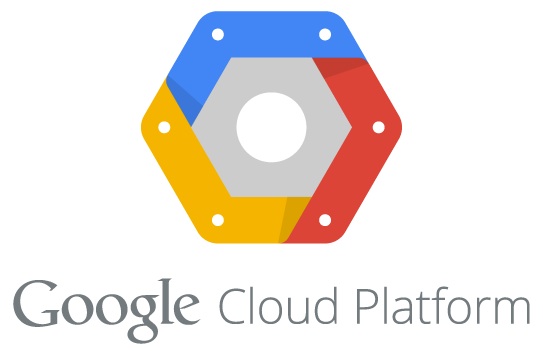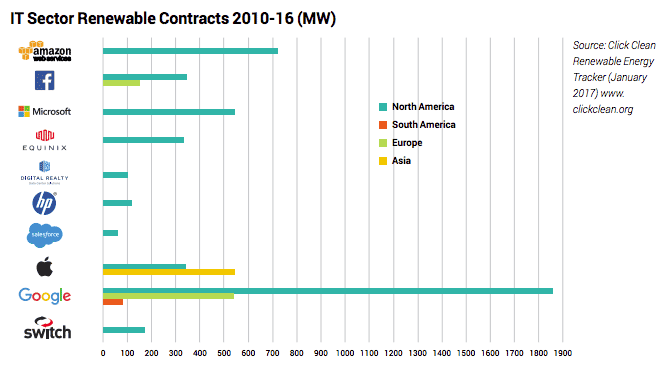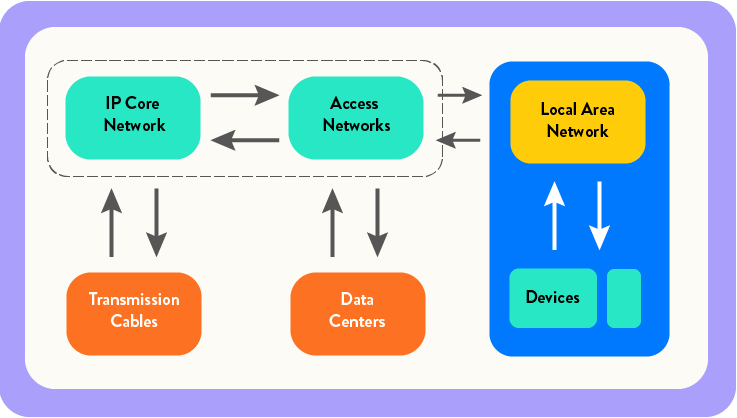Green Hosting from Mightybytes

The single most important thing you can do to reduce your website’s environmental impact is to power it with renewable energy. Here’s how Mightybytes helps our clients with secure, reliable, climate-positive green hosting.
The internet’s current carbon footprint is larger than the commercial airline industry. This footprint grows every day due to our increasing global appetite for data. It is on track to generate more carbon emissions, which contribute to climate change, by 2025 than any country except China, India, and the United States.
When it comes to digital products like websites and mobile apps, green hosting powered by renewable energy can help mitigate the long-term effects of climate change. This is a key part of any sustainable data strategy.
Our Long Road to Viable Green Hosting
As a Certified B Corp, it is important that Mightybytes provide inclusive, responsible, and more sustainable digital products and services to clients. Our website hosting and maintenance services help clients mitigate risk and reduce environmental impact. Reliable, secure green hosting is crucial to this.
Since the early 2010s, Mightybytes started—and subsequently severed—relationships with many green hosting providers. These ties were often cut due to problems with site reliability or poor customer service. After a long and mostly unsuccessful partner search, we have finally landed on a good mix.

Pantheon’s Feature-Rich Platform
Pantheon provides cloud-based hosting solutions for WordPress and Drupal applications. Their platform is stable, scalable, secure, and feature-rich. They offer a great reseller program that includes premium support, onboarding, and training. This gives Mightybytes the tools we need to efficiently manage client hosting accounts. Also, their support and customer service help us grow this part of our business.

Google’s Commitment to the Planet
Google has learned how to deploy wind and solar at scale, and how to work with governments to develop public policy.
— Catherine Clifford, CNBC
Pantheon built their service atop Google Cloud Platform (GCP). Google is the world’s largest corporate investor in renewable energy. Company operations are carbon neutral since 2007. They also commit to operating carbon-free by 2030. This commitment to sustainability is unmatched by most companies.
Together, these two companies provide optimal green hosting solutions for our clients’ needs.
Pantheon Efficiency and Service
Pantheon provides key hosting features that our clients need:
- Speed: Pantheon’s environment deliver’s optimized data more quickly than other providers like AWS, WP Engine, GoDaddy, etc.
- Uptime & Reliability: Our account is secure with 99.99% uptime. Many updates are automated, saving our developers time.
- Scalable Infrastructure: Our Pantheon account can grow as customer needs do.
- Customer Service: Quick response time resolves issues fast, which our clients appreciate.
Plus, we can quickly customize each client’s account based on their specific needs through our agency dashboard. Finally, the company invests in technology innovations like automated testing, serverless CMS implementations, and so on.
Green Hosting Defined: Google’s Energy Mix
Google reached their goal of being carbon neutral in 2017. They also purchased enough Renewable Energy Credits (RECs) and carbon offsets to ensure carbon neutrality since the company started in 1998. The company also claims to have “the cleanest cloud in the industry“:
- 90% of waste is diverted from landfills.
- 100% renewable energy is used for all cloud regions.
- Their enterprise data centers have a Power Usage Effectiveness (PUE) rating of 1.1.
- Their data centers are also two times more efficient than typical providers.
This commitment to renewable energy goes back years, as is evidenced by this image from 2017:

Using RECs: Pros and Cons
Wind and solar resources provide power only when the wind is blowing or the sun is shining but Google’s data centers operate 24×7. If we wanted to power our data centers from adjacently-sited wind or solar and operate disconnected from the rest of the grid, Google’s products would be offline whenever renewable resources aren’t producing energy.
— Gary Demasi, Director of Global Infrastructure, Google
Google’s plans to run all their data centers on carbon-free energy by 2030. Purchasing RECs and carbon offsets help them fill the gaps as they work toward this goal. However, not all RECs are created equal:
If you’re paying for the electricity along with the RECs it’s a viable solution. But if you’re just buying the RECs alone, you’re not actually improving the situation. Companies that purchase RECs and not the electricity that comes with them are, in effect, just buying PR.
— David Pomerantz, Executive Director, Energy and Policy Institute
In other words, by purchasing unbundled RECs, any hosting provider can make “green” claims without actually being part of the solution. This is an important distinction.
RECs Purchasing Criteria
Google uses three criteria when purchasing RECs:
- Additionality: Purchased RECs support producing more renewable energy.
- Bundled energy and certificates: Both the physical renewable energy and its associated certificates are purchased directly from suppliers and not on the open market, where they can be unbundled.
- Proximity: Energy sources and the data centers they power are close to each other, reducing in-transit energy loss.
Additionally, Google invests in numerous projects to maximize renewable energy production. They also regularly craft new technological efficiency innovations. This makes Google a model corporate leader in renewable energy.

Achieving Climate-Positive Green Hosting
After an exhaustive search, we can finally offer secure, reliable green hosting for client projects. That said, green hosting, however important, is also only one component of a larger system:
- Via sustainable web design practices, Mightybytes designs and builds more accessible, efficient, lower carbon digital products and services than the internet average.
- Mightybytes also offsets any Scope 3 digital emissions generated by the data transfer from client accounts. This is possible due to data provided by Pantheon and the latest research on calculating digital emissions. This is key to our Net Zero commitment.
One day, we will offer green digital solutions that encompass wider system boundaries. In the meantime, Mightybytes goes well above and beyond what most green hosting providers currently offer.
Green the Web With Us!
As of April 2022, there were five billion internet users worldwide, which is 63 percent of the global population.
— Statista, Global Digital Population
Most of the world uses the internet. Unfortunately, just a small portion of its power comes from renewable sources. We’re in a climate emergency. It is more important than ever to reduce waste and transition to clean energy as quickly as possible.
Mightybytes offers green hosting to customers with a current project or maintenance contract. If you want to learn more about these services, please contact us.
Similarly, if you want to improve your website’s environmental impact, check out our web sustainability checklist below or look into our digital sustainability services.
Digital Carbon Ratings, now in Ecograder.
Understand how your website stacks up against industry carbon averages with this new feature.
Try Ecograder


